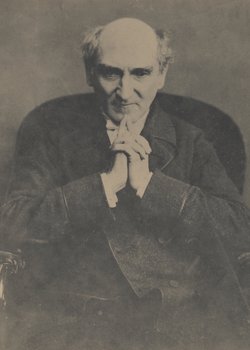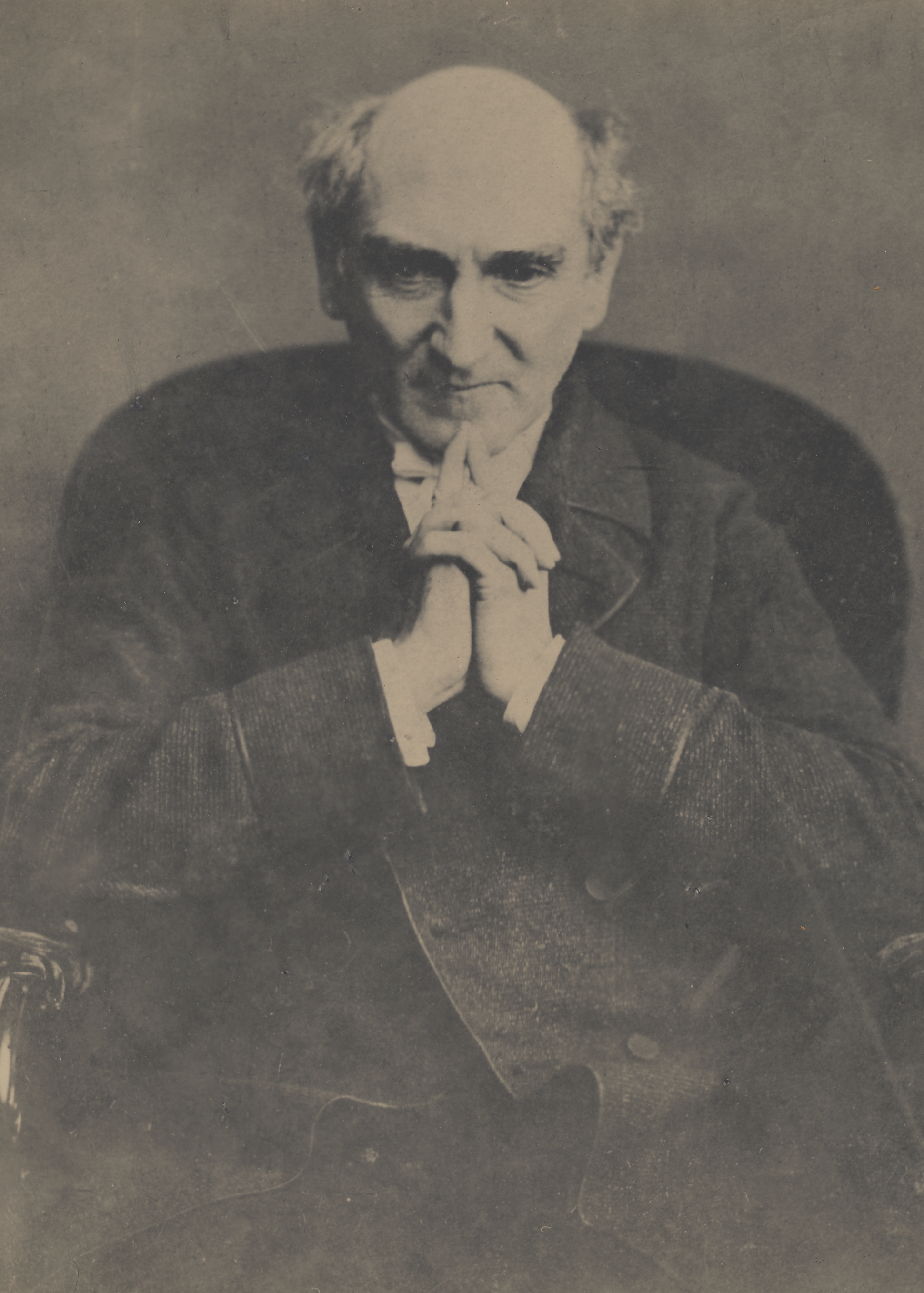In August, Pierce had a crisis of faith and renounced his Anglican Orders in order to study Roman Catholicism, which in his mind necessitated selling "White Cottage" and going to Rome. Cornelia believed in the sincerity and integrity of her husband's calling and found virtue in converting to Catholicism herself. She followed her husband's lead, but she did it her way. Pierce was adamant about waiting to take the sacraments in the holy city, but his wife was ready immediately. When the voyage from New Orleans was delayed several weeks, Cornelia was received into the Catholic Church and took her First Communion before leaving the States.
After 60 days at sea and a stop in southern France, the Connellys final reached Rome in February 1836. Pierce was received into the Catholic Church on Palm Sunday. As a married couple with two children, coming all the way from America to join the Church, the Connellys were a novelty. They quickly integrated into local society, had an audience with Pope Gregory XVI and were frequent visitors of the influential Borghese family. Their third child, a son, John Henry "Harry", was born while they were in Rome in 1837.
In the spring of 1838, on their return from Europe, the Connellys accepted an invitation to live and work at St Charles College in Grand Coteau LA. In this remote Louisiana outpost, Pierce taught English at this Jesuit college and Cornelia taught music at the Academy of the Sacred Heart while raising their children. For a couple of years the family lived an idyllic life, and Cornelia blissfully filled her days teaching with the nuns at the Convent of the Sacred Heart. In 1839, their fourth child, Mary Magdalen, was born and she died after only a few weeks. On February 2, 1840, while watching the children play outside with the dog, Harry fell into scalding liquid in the sugar boiler and subsequently died in Cornelia's arms.
Pierce went on a retreat in October 1840 and had another epiphany: he was being called into the priesthood. He revealed his decision to his pregnant wife, and she dutifully accepted it as God's will, although the implications for the family were drastic. He made it clear that for them, following God's will would require immediate celibacy, and eventually they would have to live separately. Cornelia was heartbroken but willing to make whatever sacrifices God required of her. In January, she went into retreat where she reaffirmed her commitment to her own spiritual journey, and in March 1841, her son, Pierce Francis "Frank" was born.
The following year, Pierce had an opportunity to work in England as a tutor and to give Mercer an English education. He and his son left in May 1842, and Connelly and the two younger children joined the Sacred Heart community, living in a very small cottage next to the convent.
Because he was married, approval for Pierce to become a priest had to come directly from Rome, and Connelly had to accompany him there to sign a petition for separation. Before leaving Louisiana, conflicted Cornelia offered her husband an opportunity to change his mind and reconcile the marriage. He remained steadfast in his desire to join the priesthood even if it meant splitting up the family.
In the fall of 1843 Connelly and her husband presented their petition to Pope Gregory XVI, and the following spring they were granted a Deed of Separation. Pierce began his ecclesiastical studies, and Connelly, who had become a postulant in America, remained true to her calling and entered the Sacred Heart convent. Mercer and Adeline were at boarding school, but Connelly was able to keep young Frank with her.
Pierce visited his family weekly, and when he was ordained, he said his first mass at his wife's convent. It was a very emotional experience for Cornelia to receive Holy Communion from her husband and for Adeline to receive her First Communion from her father.
In the 1840s there was a sectarian movement whose aim it was to influence Britain toward being a united Catholic state. It seemed logical that raising children with a Catholic education would be a good place to start. Because of her talent for teaching and compassion for children, Cornelia was handpicked to start a convent school in Derby, England. By now she was accustomed to following God's orders for her life, so she packed up the children and went to Derby.
"Sr Connelly" started wearing a habit in December 1846, and some months later she took her temporary vows. Rather than join an established order, it was Connelly's mission to found a new order which she called the Society of the Holy Child Jesus (SHCJ). As Superior, she and the nuns that joined her opened a boarding school for girls with a full curriculum including English, foreign languages, social studies, arithmetic, music, art, and needlework. As her Society grew and her work in education flourished, great personal anguish returned when
Pierce renounced his Catholic priesthood and his Catholic faith and came to England to regain custody of their children. He removed them from the schools they were attending and denied Cornelia all contact with them, hoping thus to force her to return to him as his wife. He even pressed a lawsuit against her that gained notoriety in England, but the courts rejected his claim after a retrial.
Pierce was restored to active Anglican orders around 1868, and ended as an Episcopal priest to the American Parish of St James Church in Florence, Italy, from about 1870 until his death there in 1883. He was buried in Cimitero Evangelico degli Allori in Florence.
In August, Pierce had a crisis of faith and renounced his Anglican Orders in order to study Roman Catholicism, which in his mind necessitated selling "White Cottage" and going to Rome. Cornelia believed in the sincerity and integrity of her husband's calling and found virtue in converting to Catholicism herself. She followed her husband's lead, but she did it her way. Pierce was adamant about waiting to take the sacraments in the holy city, but his wife was ready immediately. When the voyage from New Orleans was delayed several weeks, Cornelia was received into the Catholic Church and took her First Communion before leaving the States.
After 60 days at sea and a stop in southern France, the Connellys final reached Rome in February 1836. Pierce was received into the Catholic Church on Palm Sunday. As a married couple with two children, coming all the way from America to join the Church, the Connellys were a novelty. They quickly integrated into local society, had an audience with Pope Gregory XVI and were frequent visitors of the influential Borghese family. Their third child, a son, John Henry "Harry", was born while they were in Rome in 1837.
In the spring of 1838, on their return from Europe, the Connellys accepted an invitation to live and work at St Charles College in Grand Coteau LA. In this remote Louisiana outpost, Pierce taught English at this Jesuit college and Cornelia taught music at the Academy of the Sacred Heart while raising their children. For a couple of years the family lived an idyllic life, and Cornelia blissfully filled her days teaching with the nuns at the Convent of the Sacred Heart. In 1839, their fourth child, Mary Magdalen, was born and she died after only a few weeks. On February 2, 1840, while watching the children play outside with the dog, Harry fell into scalding liquid in the sugar boiler and subsequently died in Cornelia's arms.
Pierce went on a retreat in October 1840 and had another epiphany: he was being called into the priesthood. He revealed his decision to his pregnant wife, and she dutifully accepted it as God's will, although the implications for the family were drastic. He made it clear that for them, following God's will would require immediate celibacy, and eventually they would have to live separately. Cornelia was heartbroken but willing to make whatever sacrifices God required of her. In January, she went into retreat where she reaffirmed her commitment to her own spiritual journey, and in March 1841, her son, Pierce Francis "Frank" was born.
The following year, Pierce had an opportunity to work in England as a tutor and to give Mercer an English education. He and his son left in May 1842, and Connelly and the two younger children joined the Sacred Heart community, living in a very small cottage next to the convent.
Because he was married, approval for Pierce to become a priest had to come directly from Rome, and Connelly had to accompany him there to sign a petition for separation. Before leaving Louisiana, conflicted Cornelia offered her husband an opportunity to change his mind and reconcile the marriage. He remained steadfast in his desire to join the priesthood even if it meant splitting up the family.
In the fall of 1843 Connelly and her husband presented their petition to Pope Gregory XVI, and the following spring they were granted a Deed of Separation. Pierce began his ecclesiastical studies, and Connelly, who had become a postulant in America, remained true to her calling and entered the Sacred Heart convent. Mercer and Adeline were at boarding school, but Connelly was able to keep young Frank with her.
Pierce visited his family weekly, and when he was ordained, he said his first mass at his wife's convent. It was a very emotional experience for Cornelia to receive Holy Communion from her husband and for Adeline to receive her First Communion from her father.
In the 1840s there was a sectarian movement whose aim it was to influence Britain toward being a united Catholic state. It seemed logical that raising children with a Catholic education would be a good place to start. Because of her talent for teaching and compassion for children, Cornelia was handpicked to start a convent school in Derby, England. By now she was accustomed to following God's orders for her life, so she packed up the children and went to Derby.
"Sr Connelly" started wearing a habit in December 1846, and some months later she took her temporary vows. Rather than join an established order, it was Connelly's mission to found a new order which she called the Society of the Holy Child Jesus (SHCJ). As Superior, she and the nuns that joined her opened a boarding school for girls with a full curriculum including English, foreign languages, social studies, arithmetic, music, art, and needlework. As her Society grew and her work in education flourished, great personal anguish returned when
Pierce renounced his Catholic priesthood and his Catholic faith and came to England to regain custody of their children. He removed them from the schools they were attending and denied Cornelia all contact with them, hoping thus to force her to return to him as his wife. He even pressed a lawsuit against her that gained notoriety in England, but the courts rejected his claim after a retrial.
Pierce was restored to active Anglican orders around 1868, and ended as an Episcopal priest to the American Parish of St James Church in Florence, Italy, from about 1870 until his death there in 1883. He was buried in Cimitero Evangelico degli Allori in Florence.
Family Members
Advertisement
Explore more
Sponsored by Ancestry
Advertisement








